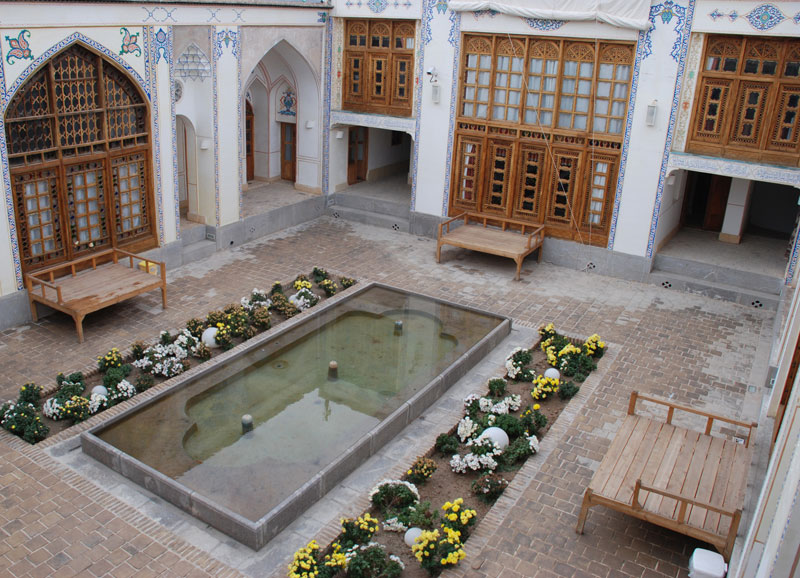
(Persian. inside) is a courtyard in Muslim houses, which allowed only women or men, who are close relatives and underage boys.
Iranian houses, as a rule, had two courtyards. Around the first courtyard, there were living rooms decorated with arches, which served as a place to receive guests. In the past, the construction of courtyards took into account the need for protection from the heat, and at the same time, the use of sunlight. The yard was built in a rectangular or square shape with a small stone pool in the center. Various trees and flowers grew around the pool, creating an additional shadow.
Women, men belonging to the category of "mahram," and underage boys had the right to enter the second courtyard, so the movements of the residents were hidden from the eyes of others. In the summer, ottomans were set up in the backyard in the shade of the trees so that people could rest.
Andaruni consisted of a complex of rooms that served to entertain, sleep, and conduct daily household chores. Here were the kitchen and storerooms. Unlike the severity characteristic of the front room (buruni), rooms in andaruni are usually richly decorated with carpets, silk pillows, and rich interior decoration. In cases such as childbirth, weddings, circumcision, funerals, and return from pilgrimages, female visitors entertained themselves in Andaruni, where they would take off their veils (ruanda) and shoes suitable for silk at the entrance and brocade dresses and change into soft, comfortable slippers. Performances were performed by musicians and dancers, usually women (but sometimes young Jewish boys). Men, except for immediate relatives, were not allowed into Andaruni. Even doctors had to treat a woman from behind the curtain, seeing only the language of the almost hidden patient.